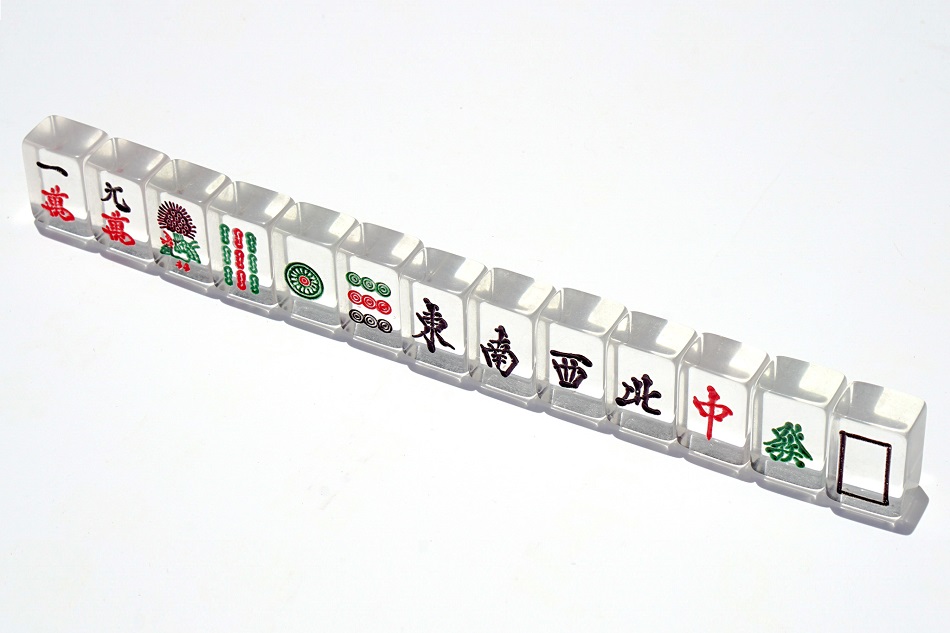Interview #98
Book Corner: “老虎” by Keith Chun
Kit Chan
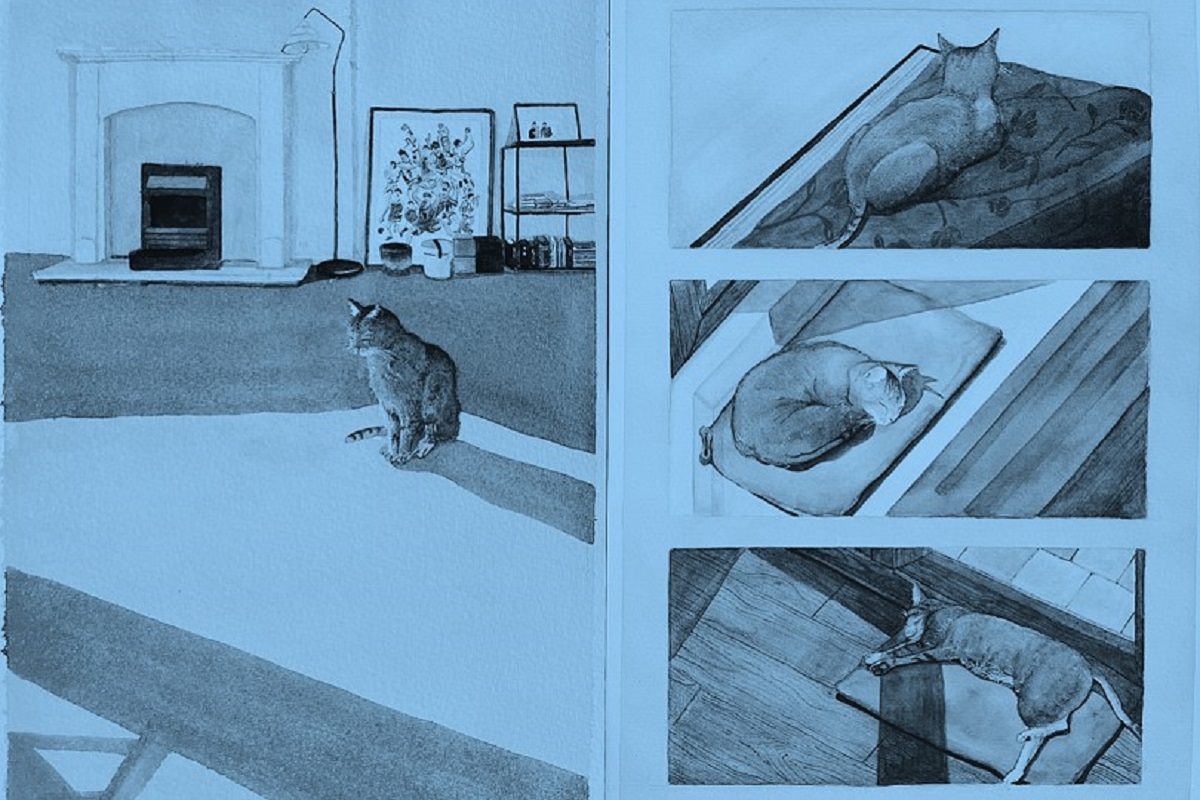
Written and Images by Kit Chan
Translated by Joel Wong
A book is like a friend. We understand the world and life, or even observe ourselves through texts, and have a deep realization of oneself that we are not alone. PMQ invites different people from design and culture sectors to recommend a book, so that you can enrich yourselves as book therapy.
Why would you recommend this book?
Chan Kit: Take a look at a cat's life amid turbulence; we will find the momentary lapse of reason.
Ups and downs, safe and sound, the four simple words are crucial in the era of people departing from and returning to where they belong - people packed their belongings to go somewhere far away from home. Their beloved “furball” was tagged in a pet cage, met the airline’s requirements, and boarded the plane worriedly with frightened eyes.
This has been a norm for the Hong Kong people in the past few years. Whether you decide to stay or to go, the consequences must follow. This is also the theme of the exhibition Safe Landing. The exhibits include over a dozen watercolor illustrations and a handmade picture book. The protagonist is a cat named Tiger. The author is Keith Chun, and Tiger is his family cat, who has been with him for almost a decade.
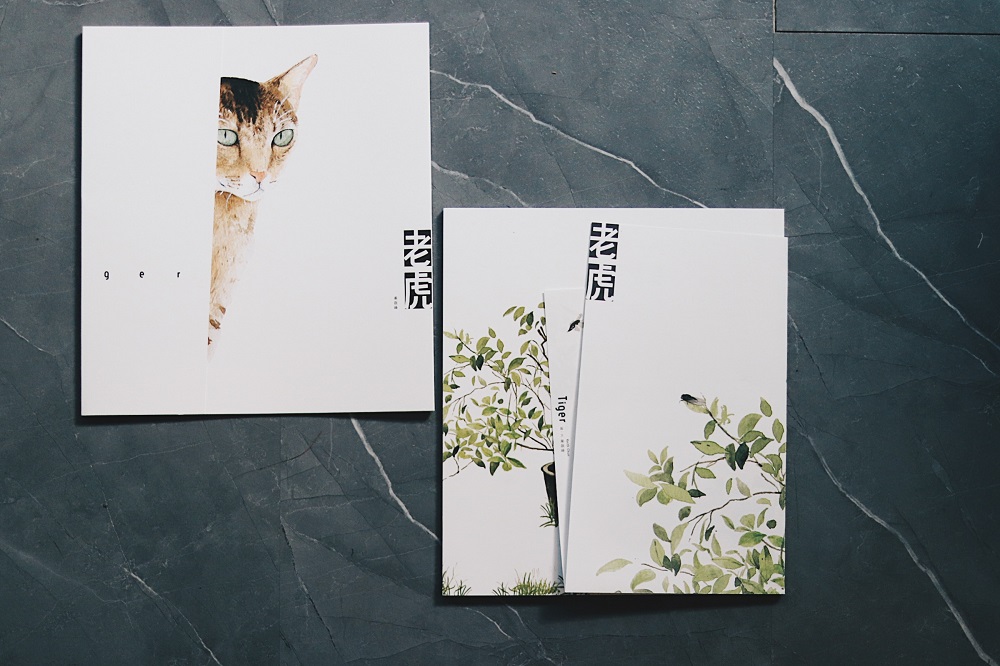
Looking back, having a cat was random. In 2014, Keith and family moved to a village house in Sai Kung. Tiger was a stray cat that was left free by the neighbours. It gradually became a habit and lingered in front of Keith's house, but Tiger was never allowed to enter it. "Until one night, when the weather suddenly turned cold, my mother, who had insisted that she would never keep cats, went into the kitchen to fry luncheon to feed Tiger." Keith laughed while recalling such an incident.
Then, Tiger suddenly disappeared for three weeks, causing Keith's whole family to despair. "It felt like a bad breakup," Keith described. What happened next is not difficult to guess: Tiger was found, adopted, and became a member of Keith's family.
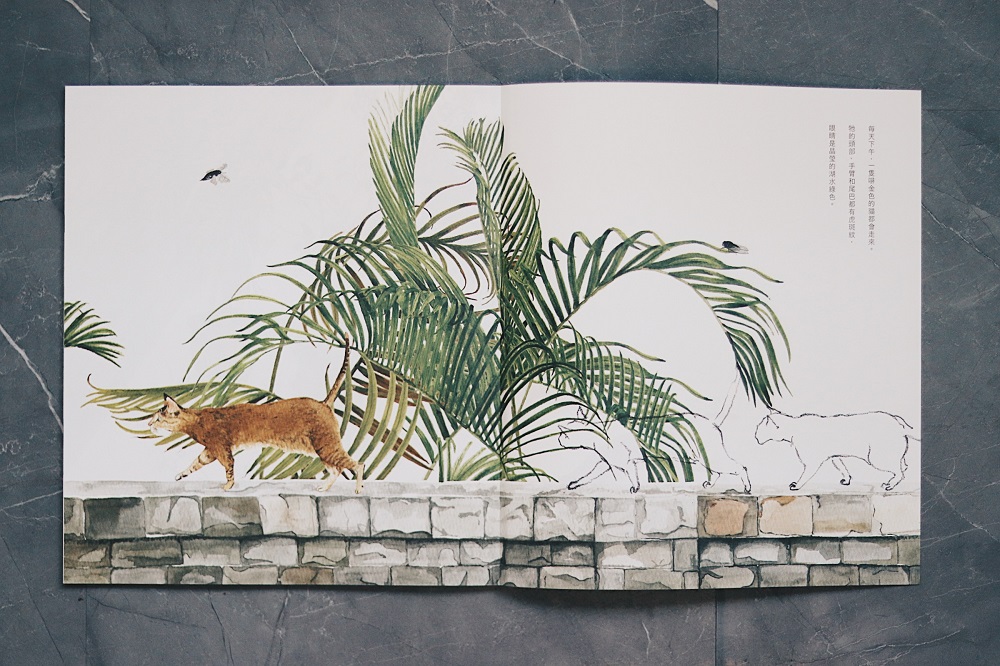
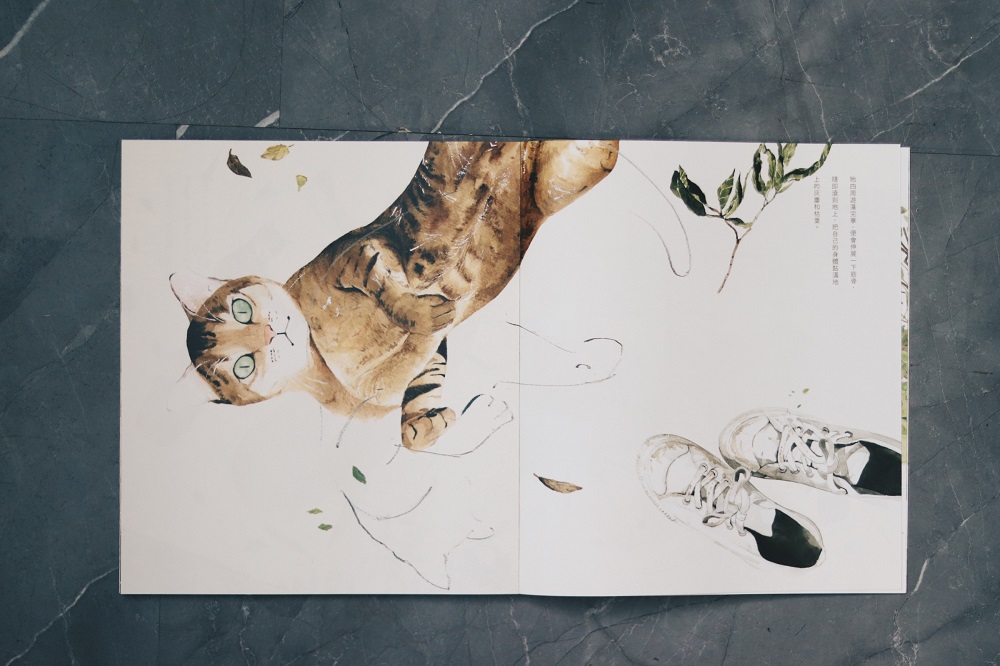
In 2016, Keith turned this story into the first edition of the picture book "Tiger" (a revised edition was released this year). It instantly became a core inspiration for his creativity: "Drawing is a way of documenting things. I have always been fond of picture books, and I collect picture books from local artists every time I travel to a city."
Flipping through the pages of Tiger, you will notice how light the overall tone is; there is no emotional rollercoaster; it is all about moments in life. If you study each illustration carefully, you will also notice a lot of empty spaces, almost like no background, leaving only the subject as the main focal point of it. This is a creative preference of Keith’s: "Instead of talking too much and showing everything, I’d rather leave it blank. Making the idea I am trying to present to the readers more stand out." Those empty spaces provide the readers some air and room to evaluate.
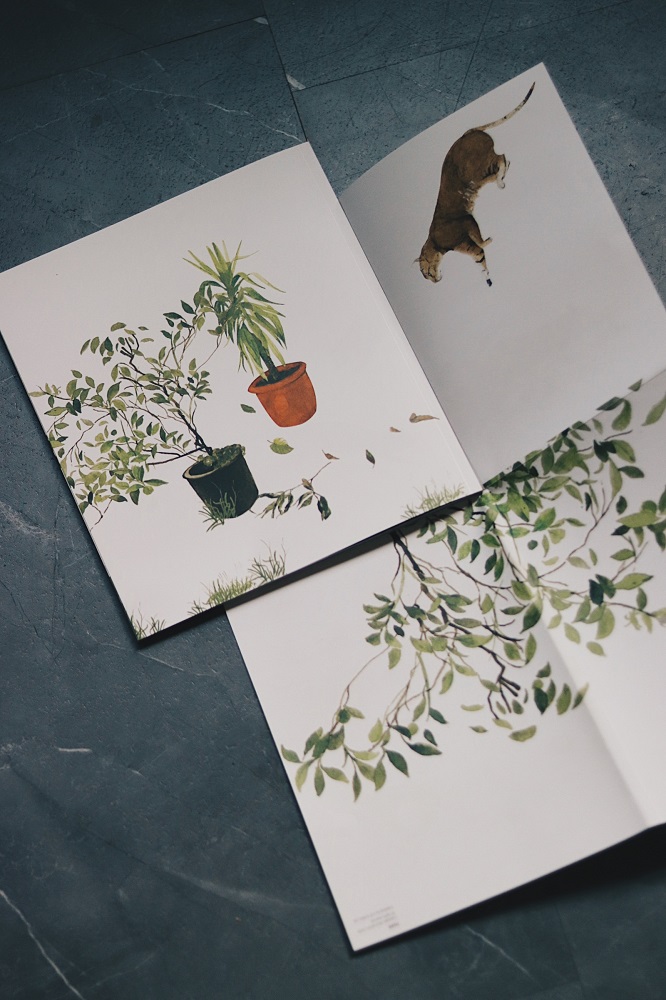
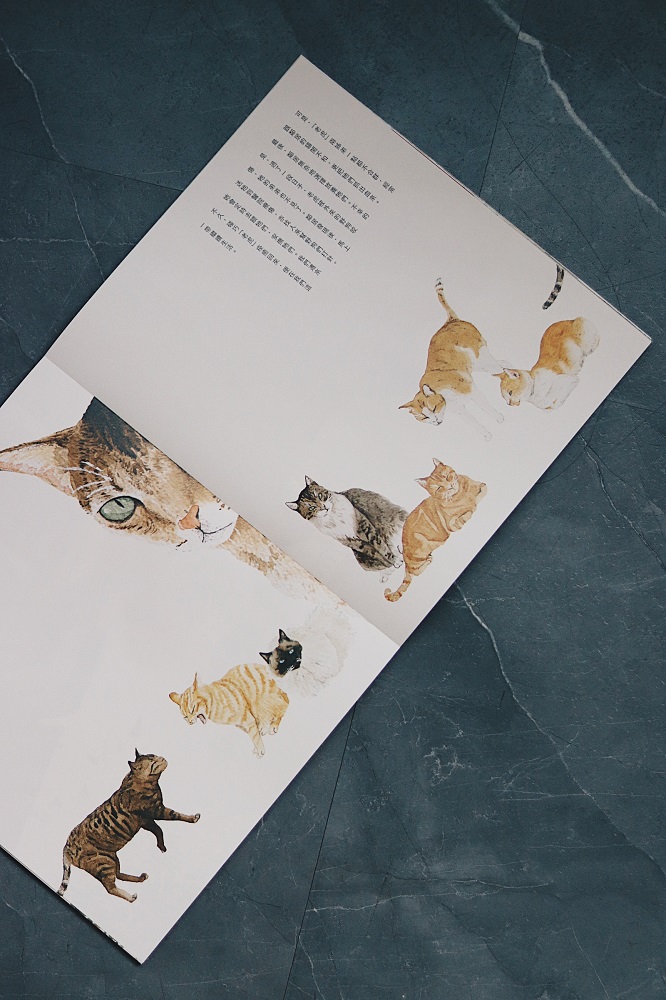
Another thing Keith insists on in the production of the picture book is the sense of "softness."
Unlike any picture books on the market, Tiger did not produce in hardcover to maintain its idea of "softness." Also, there is no cat on the cover, only scattered leaves, which implies Tige ris wandering around in the bushes of the village. When you open the "hidden" folding page on the cover, you glimpse the cat's shadow; "It's like shooting a movie, utilizing close-ups and distant shots, lure the readers into the narrative." Besides the unusual design of the cover, the binding is also not commonly seen - Keith chose to bind the entire book himself, using the OTA binding method, which requires a special adhesive he ordered from the United States. The advantage of such a binding method is that the entire book can be fully opened and laid flat; such high flexibility brings convenience to the readers.
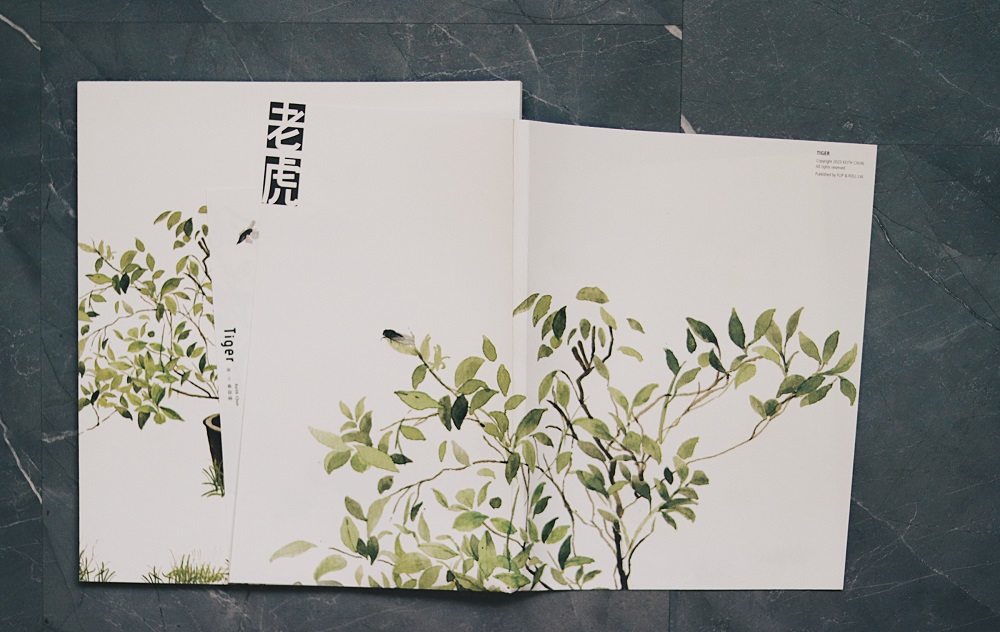
"All the illustrations are done in spreads. The "flat presentation" is ideal, in my opinion." Assuming the primary readers' tier is children, this binding will prevent the pages from ripping off quickly, making the book more durable. The picture book has been published, but the tiger's story must be finished. Last year, Keith's family moved to the UK with Tiger, leaving him to stay in Hong Kong temporarily. Dealing with the short-term separation between himself and Tiger, Keith suddenly realized that it might be time to end his story with cats and move on.
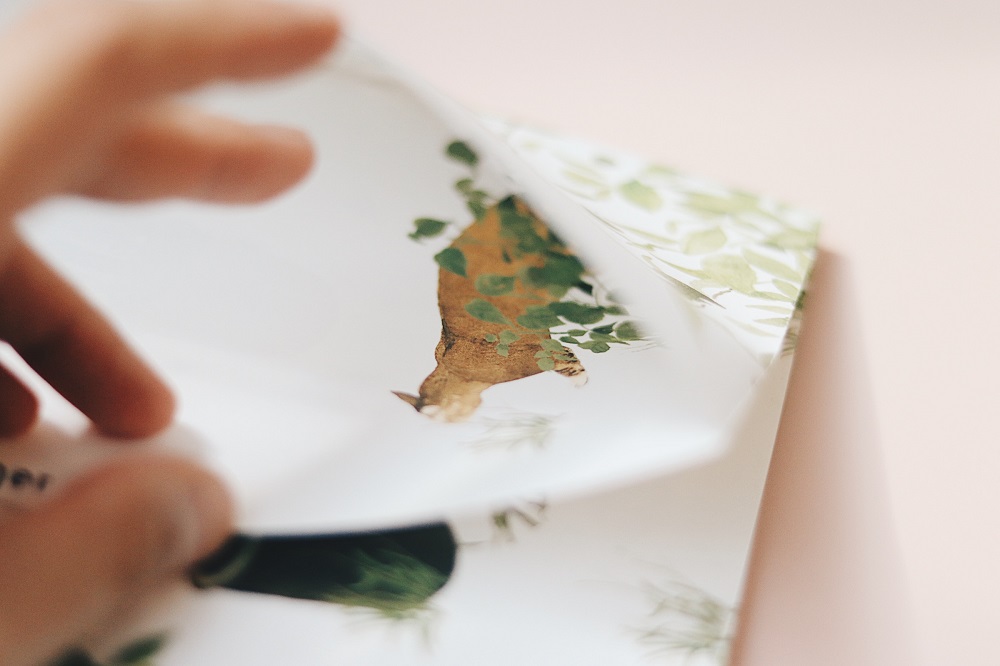
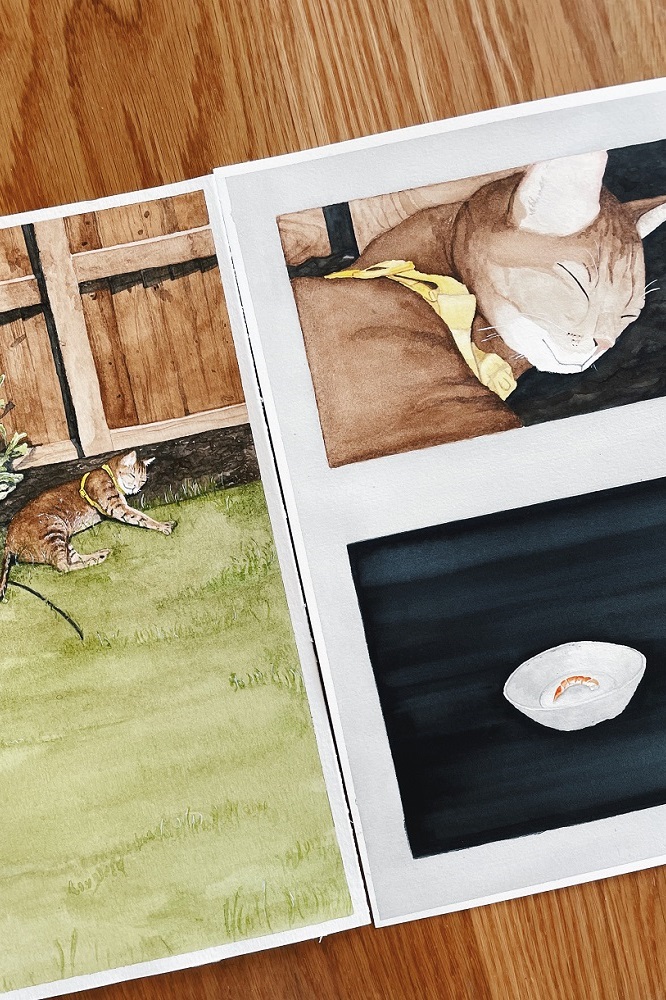
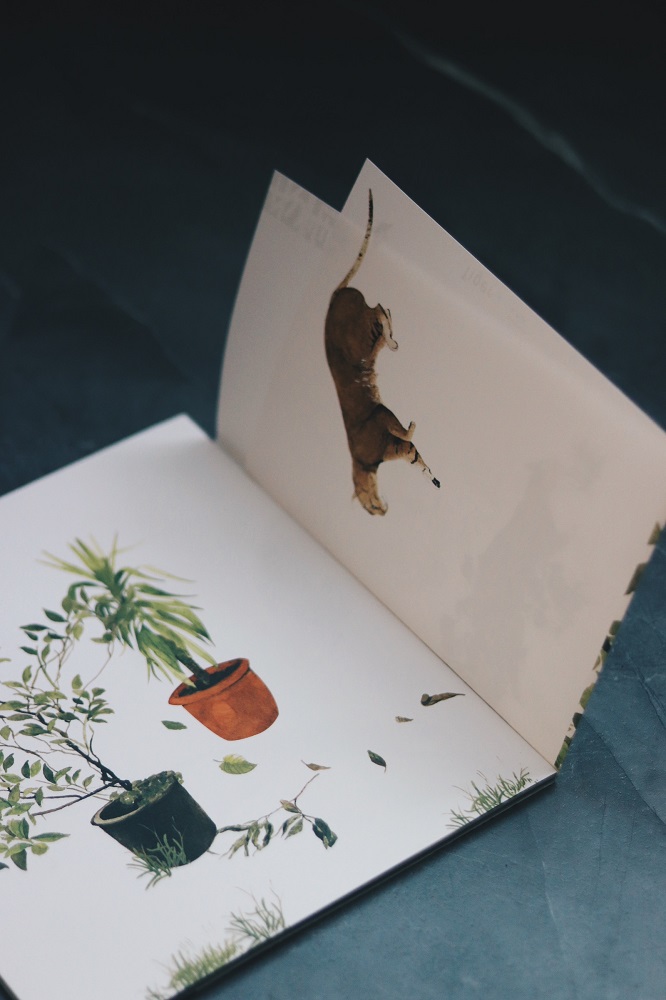
During the preparations for immigration, Tiger developed inexplicable health conditions. He refused to eat and had hematuria; "His body language was different." Because of the pandemic, the flight route had been altered, and after a long haul of 44 hours, the 14-year-old elderly cat finally arrived in his new home and country, which he was unfamiliar with.
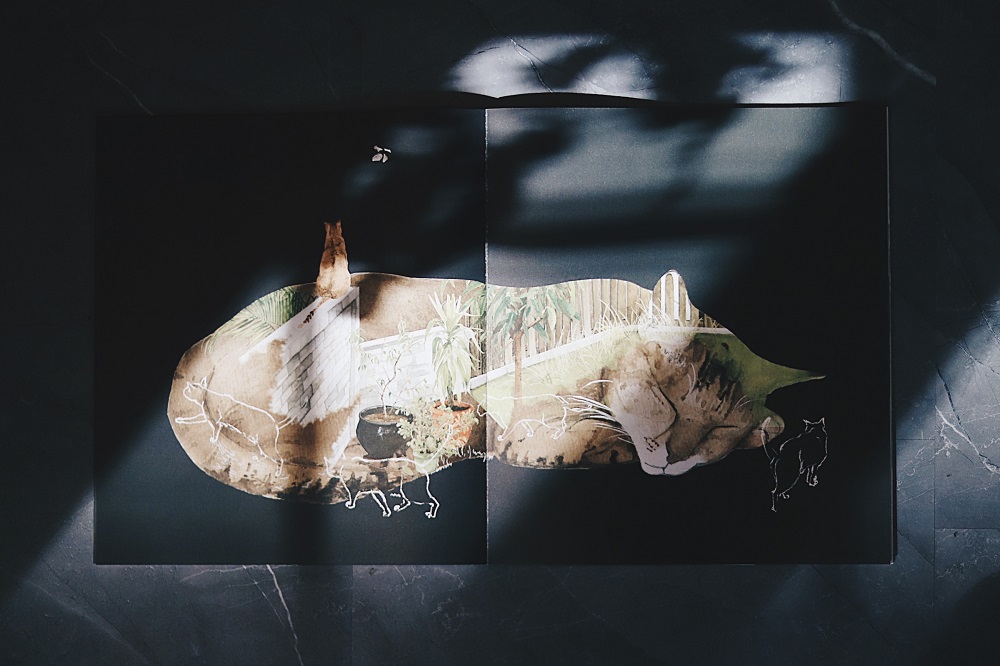
This past summer, Keith flew to the UK to visit his family and it was wonderful. Seeing Tiger gradually regaining its health. Keith also seized such opportunity to record Tiger's daily life in the UK in watercolor style. Around a dozen of drawings, alongside with the revised version of the picture book, are combined into the exhibition called "Safe Landing" which is a story about Hong Kong told from the perspective of a cat.
Unlike picture books, some of the paintings Keith did in the UK emphasize a philosophical level of life. For example, when Tiger needs to bathe under the sun, he will find the beam of light penetrating the house to fight against the cold and dampness of the UK. "The same goes for people from all walks of life. Can we find that little gap in life and make ourselves more comfortable?" Keith hopes the illustrations will make people think about life for a second.
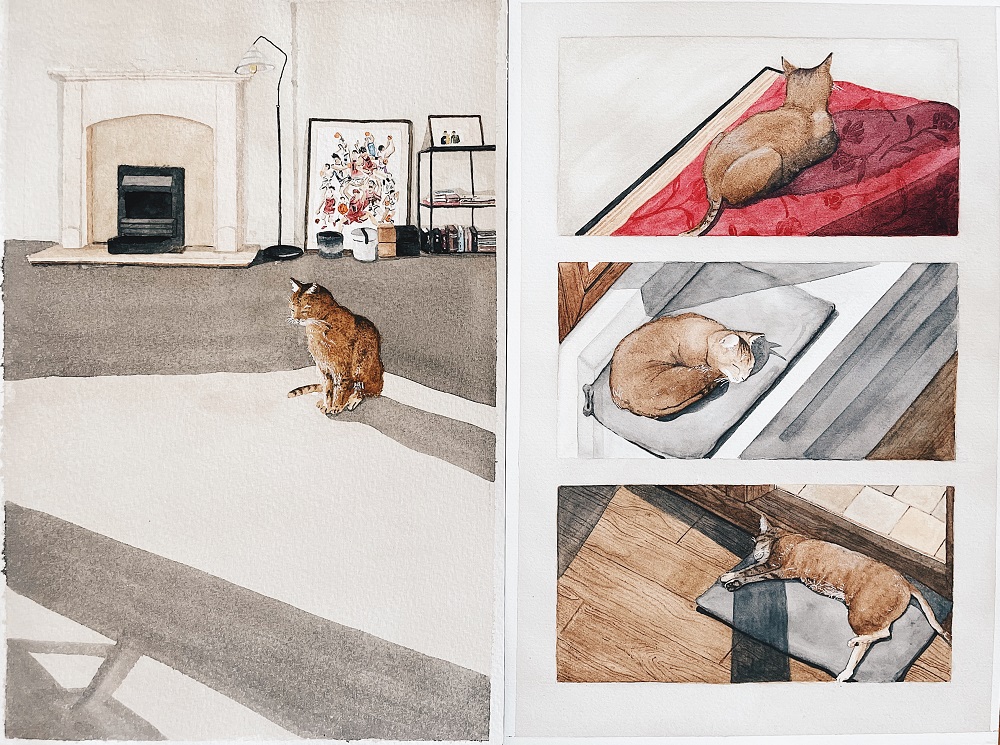
Keith admitted that he had been puzzling about whether he should stay in Hong Kong or leave where he grew up…Do people abandon their homeland whenever things go wrong? "I went to the UK with this question in mind. And now that I'm back in Hong Kong, I still haven't found the answer yet." How should he live his life if he decided to stay for good? Keith uses the Russian-Ukrainian war as an example: "In Ukraine, which has been continuously ravaged by war, people still have children and live their lives. What kind of will of survival is that?"
Fate is uncontrollable, but how to live is always a choice. Take a look at a cat's life amid turbulence; we will find the momentary lapse of reason.
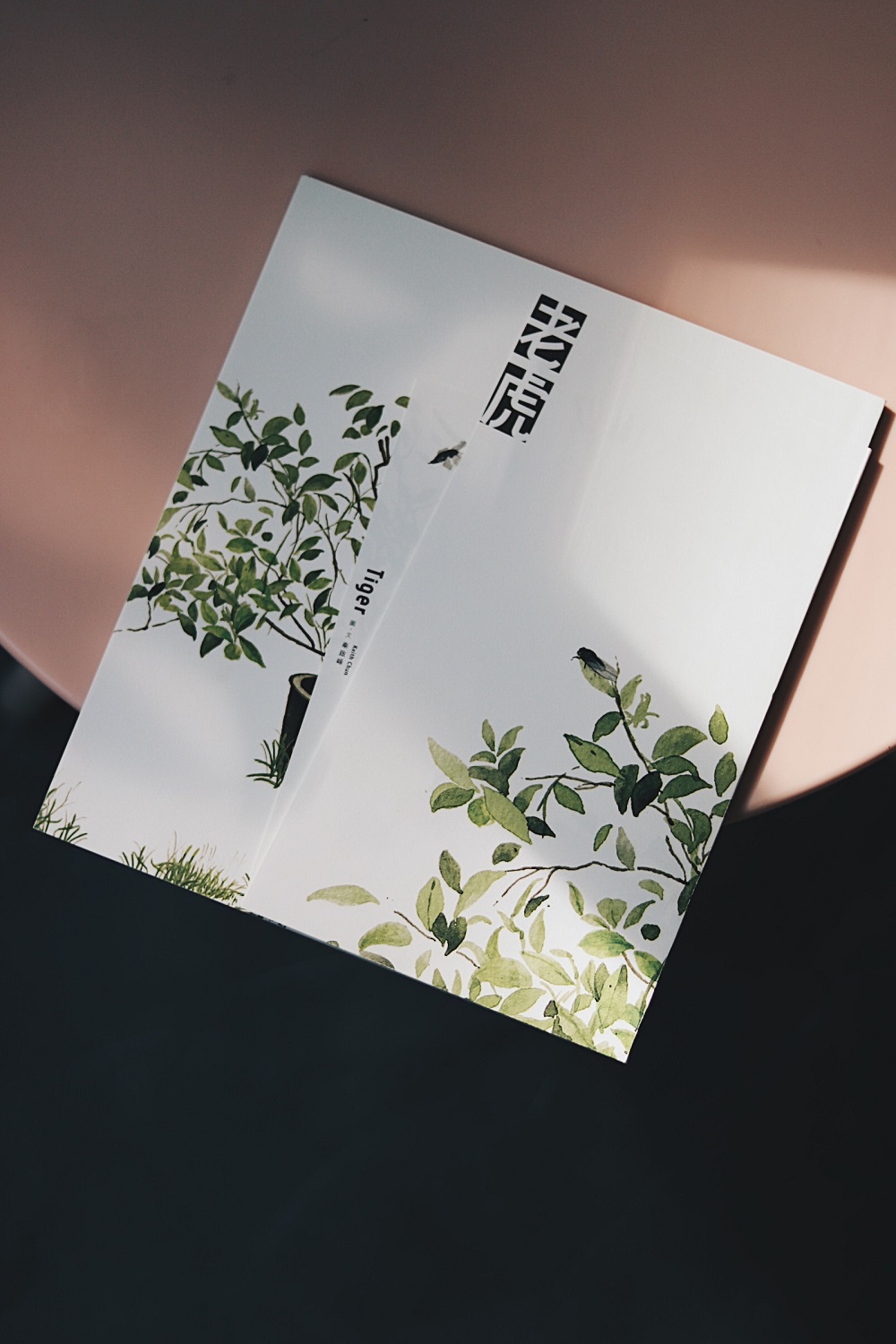
"老虎"
Author: Keith Chun
Publisher: Flip & Roll

